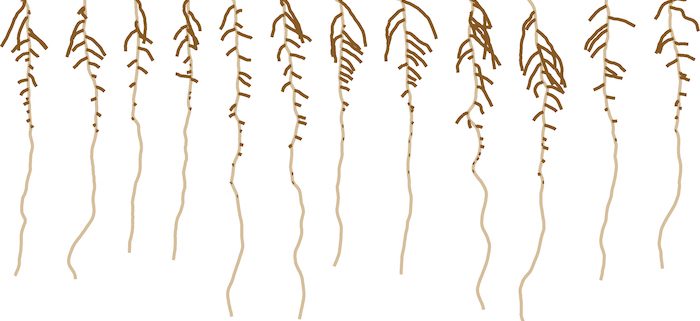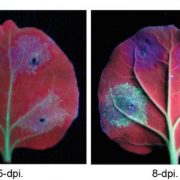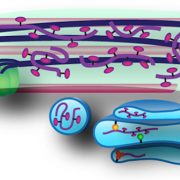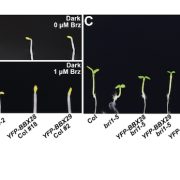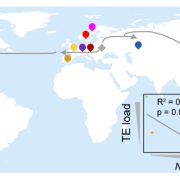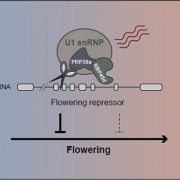Psst! Pass it on: How the message to make a new root alters gene expression
By Amy Lanctot, Hardik Gala, Jennifer Nemhauser
University of Washington, Seattle, WA 98195
Background: Roots anchor the plant in place and allow it take up needed water and nutrients. Many plants display a taproot architecture, where a single long root grows into the soil and lateral roots emerge from the sides of this primary root. Plant use these lateral roots to better explore the surrounding soil. Optimal root architecture affects many aspects of plant fitness; indeed, the number, distribution, and spacing of lateral roots can make the difference between life and death in a challenging environment. Lateral root formation requires marking and reprogramming of a few cells to retain the potential to initiate development of a new organ. One difficulty in studying the earliest stages of lateral root development is the very small number of cells that are involved.
Question: Recent technological advances have made it possible to characterize the genes that are expressed in individual cells. We used this approach to capture molecular changes during the earliest stages of lateral root development and used new tools to check whether our experiment worked.
Findings: We used single-cell RNA-sequencing coupled to a developmental timecourse to characterize gene expression in cells becoming new lateral roots. We found that the expression of genes that control cell division, the structure of the genome, and the expression of other genes increased in these cells and that many of these genes required the hormone auxin for this expression. If the expression of several of these genes decreased specifically in the cells forming lateral roots, this altered root architecture. We also found that the expression of genes in cells surrounding the ones forming lateral roots also changed during lateral root formation. This coordination between cells is likely required to limit how many cells become part of the new root and to make room for the root to grow out into the soil.
Next steps: This study builds on a knowledgebase of regulators of lateral root growth and identifies genes and tools that can be employed to engineer new traits. It also highlights the critical role of coordination between different types of cells, another avenue for future study.
Hardik P. Gala, Amy Lanctot, Ken Jean-Baptiste, Sarah Guiziou, Jonah C. Chu, Joseph E. Zemke, Wesley George, Christine Queitsch, Josh T. Cuperus, Jennifer L. Nemhauser (2021). A single cell view of the transcriptome during lateral root initiation in Arabidopsis thaliana. Plant Cell. DOI: https://doi.org/10.1093/plcell/koab101


